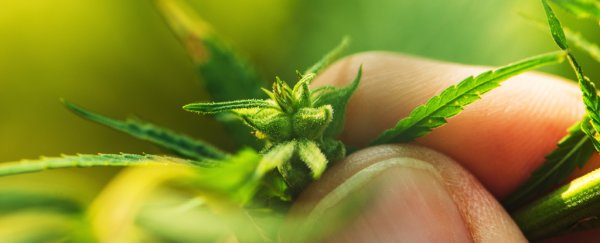It's long been known that cannabis plants are indigenous to Central Asia, but a new study provides a fresh focus on where exactly this genus may have first evolved millions of years ago.
Documents dating back to the middle ages show humans have been hypothesising about the geographical origins of cannabis for over a thousand years now, with the famed Arab polymath Ibn Wahshiyya suggesting India or perhaps China as far back as 930 CE.
But the rarity of print fossils (impressions of leaves made on other objects) in the historical record has made it difficult for the research community to identify anything more specific than Central Asia, even with the booming popularity of cannabis currently ongoing in many fields of academic and scientific enquiry.
"Despite a voluminous literature emerging in the last three decades, the classification of cannabis and its centre of origin remains under debate," a team led by first author and medical researcher John McPartland from the University of Vermont explains in a new paper.
To overcome the lack of print fossils, scientists turned to pollen from plants of the Cannabis genus; these pollens were first studied since the 1930s to help trace out the plant's long history.
Numerous fossil pollen studies have been conducted in the decades since, helping to identify ancient records of the plant across Asia and elsewhere, including noting where it thrives best.
"Cannabis flourishes in steppe – an open, treeless habitat," the researchers write.
In the new study, McPartland and his team sifted through 155 existing fossil pollen studies centred on Asia. One of the difficulties with the data is that many of those studies lump Cannabis pollen grains with those from plants of the Humulus genus. They look similar, given both plants diverged from one another about 28 million years ago.
To get around the identification issues, the researchers used a statistical technique that involves 'ecological proxies', in which they probabilistically differentiated the pollens based on other plants common in the region, including ones belonging to the Artemisia genus.
On the evidence we have, the results suggest what is the most likely geographical origin of cannabis – even if it's a hypothesis that might be impossible to ever prove.
"We bridged the temporal gap between the divergence date and the oldest pollen by mapping the earliest appearance of Artemisia," the team writes.
"These data converge on the northeastern Tibetan Plateau, which we deduce as the cannabis centre of origin, in the general vicinity of Qinghai Lake."
After that, the team thinks cannabis spread westwards – reaching Russia and Europe by about 6 million years ago – and to the east, making it to eastern China by 1.2 million years ago.
This spread made various Cannabis plants readily available for cultivation to humans all over Eurasia. And it's no wonder we quickly caught on to hemp's various properties - from mind-altering drug to fibres for rope and clothing.
The findings are reported in Vegetation History and Archaeobotany.
